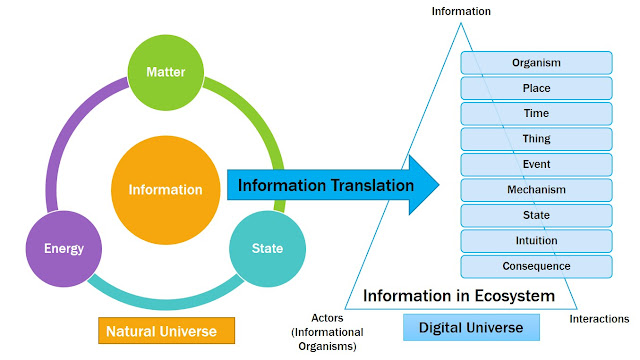The Gill Framework - Creating Agile or Adaptive Enterprise Project Management Capability for Enterprise Agility
Agile methods originated in the context of individual software project development and management can be scaled up to meet the agile or adaptive enterprise project management needs. However, the question is how to create an enterprise level agile project management capability. This post provides the snapshot of the generic Adaptive Enterprise Project Management capability (See Figure 1) from The Gill Framework® V2.0. The Gill Framework® is a meta-framework for architecting agile enterprises as adaptive enterprise service systems. The Gill Framework® was first originated in 2006 to support agile and hybrid development capability establishment and improvement for complex and large project environments. It was then further evolved to support architecting service-centric agile enterprises. The Gill Framework® has been used to create the generic Adaptive Enterprise Project Management capability, which can be tailored to a specific context.
Figure 1: The Gill Framework® V2.0 -
Adaptive Enterprise Project Management
(©Dr. Asif Q. Gill)
The adaptive enterprise project management capability is not another agile method. However, it is a generic reference capability that can be used in conjunction with agile practices and tools from a number of well-known agile methods such as XP, Scrum and Lean etc. Agility is about making complex things simpler. The adaptive enterprise project management capability followed this notion and shows the decomposition of different artefacts or work products. The elements in the adaptive enterprise project management (Figure 1) are focused on the artefacts or value or work products and the most important human factor such as teams at different levels. One can use agile and non-agile practices and tools from well-known agile methods to produce the valuable artefacts with high to low level details (vertical slicing). The relationship between elements is bidirectional with horizontal and vertical slicing. The adaptive enterprise project management capability can be operated for developing project(s) in small releases and iterations. The generic adaptive enterprise project management capability highlights the following key services for adaptive planning, analysis, architecture, design, implementation, testing and deployment at different levels, from high portfolio to low iteration level (see Figure 1).
The adaptive enterprise project management capability is not another agile method. However, it is a generic reference capability that can be used in conjunction with agile practices and tools from a number of well-known agile methods such as XP, Scrum and Lean etc. Agility is about making complex things simpler. The adaptive enterprise project management capability followed this notion and shows the decomposition of different artefacts or work products. The elements in the adaptive enterprise project management (Figure 1) are focused on the artefacts or value or work products and the most important human factor such as teams at different levels. One can use agile and non-agile practices and tools from well-known agile methods to produce the valuable artefacts with high to low level details (vertical slicing). The relationship between elements is bidirectional with horizontal and vertical slicing. The adaptive enterprise project management capability can be operated for developing project(s) in small releases and iterations. The generic adaptive enterprise project management capability highlights the following key services for adaptive planning, analysis, architecture, design, implementation, testing and deployment at different levels, from high portfolio to low iteration level (see Figure 1).
·
Portfolio management
·
Program management
·
Project management
·
Release management
·
Iteration management
A portfolio can be
decomposed into many programs. A program can be decomposed into many projects.
A project can be decomposed into many releases. A release can be decomposed
into many iterations.
Adaptive
enterprise project management requires the engagement of multiple disciplines
and stakeholder groups who may have different perspectives, objectives and
conflicting priorities. The coordination and alignment of multiple teams (stakeholders as part of the team) is essential for the success of adaptive enterprise management
capability.
The adaptive enterprise project management follows the holistic systems approach and links the portfolio, programs, projects, releases, iterations and related stakeholders groups to adaptive enterprise strategy and architecture. This is to ensure that enterprise-wide adaptive enterprise project management activities are well coordinated and aligned. The effective coordination and alignment is important and can reduce waste and increase value that is expected from the adaptive enterprise project management capability related investments. The adaptive enterprise project management capability can be tailored and applied to different industry verticals for effectively managing projects.
The adaptive enterprise project management does not replace the existing well-known agile frameworks. It ensures traceability, alignment and integration between the adaptive enterprise strategy, architecture and project management activities for consistent and effective response to unpredictable, dynamic and constantly changing business environment.
The adaptive enterprise project management follows the holistic systems approach and links the portfolio, programs, projects, releases, iterations and related stakeholders groups to adaptive enterprise strategy and architecture. This is to ensure that enterprise-wide adaptive enterprise project management activities are well coordinated and aligned. The effective coordination and alignment is important and can reduce waste and increase value that is expected from the adaptive enterprise project management capability related investments. The adaptive enterprise project management capability can be tailored and applied to different industry verticals for effectively managing projects.
The adaptive enterprise project management does not replace the existing well-known agile frameworks. It ensures traceability, alignment and integration between the adaptive enterprise strategy, architecture and project management activities for consistent and effective response to unpredictable, dynamic and constantly changing business environment.




I would like to say thanks for sharing such a great information here and We are also providing Agile Assessment tool for your business process.
ReplyDeleteI am truly inspired with this blog! Thanks for this great share. Very useful Information. Agile Project Management Framework depicts a series of step that will take you initial vision of the product to the final product. Agile Project Management is an iterative approach to planning and guiding project processes. Just as in Agile Software Development, an Agile project is completed in small sections.
ReplyDelete